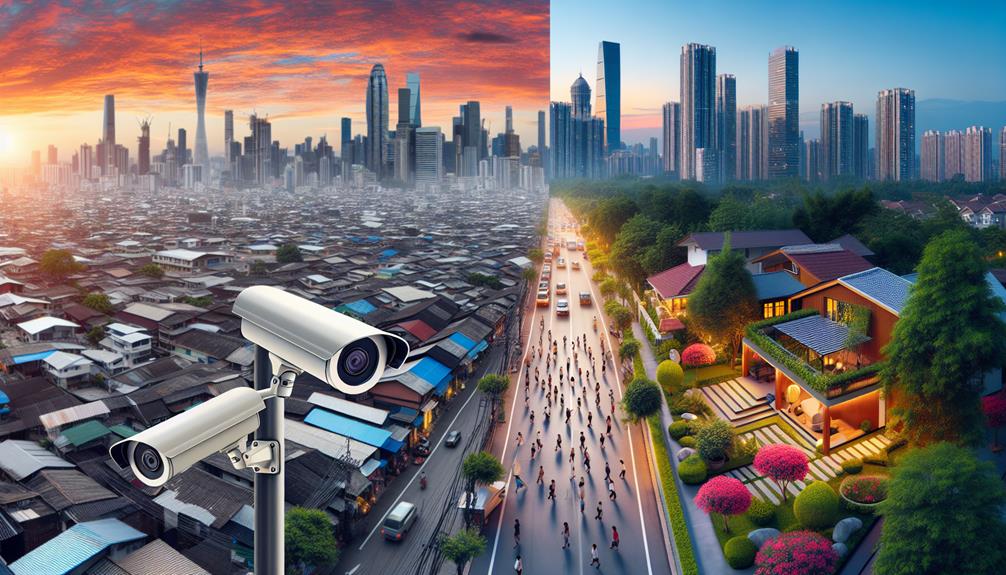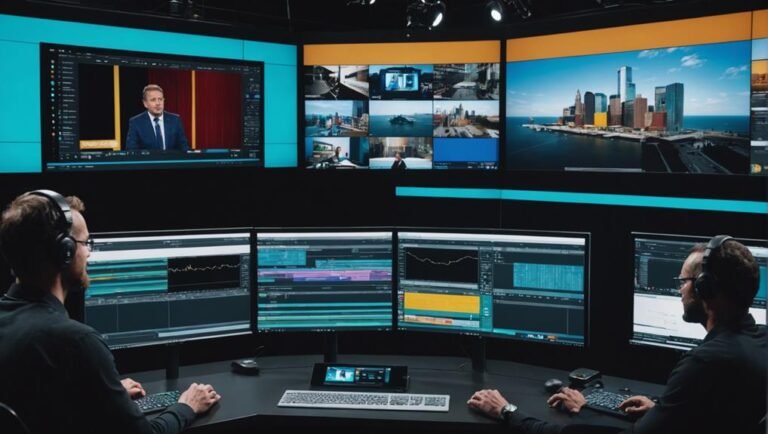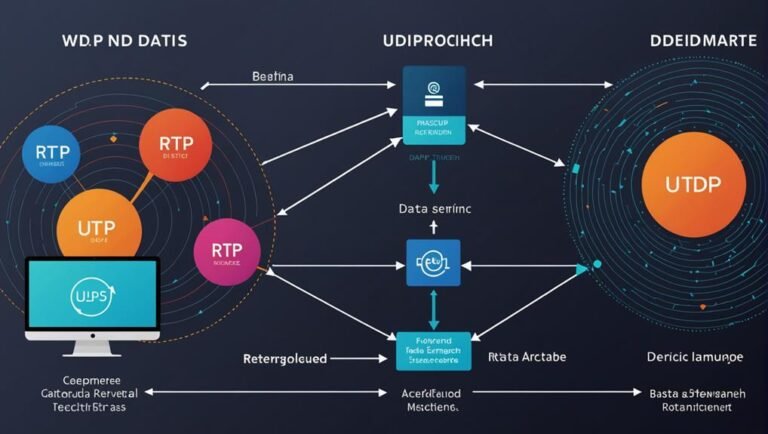Choosing between CCTV and surveillance cameras depends on your needs. CCTV systems are hardwired, transmitting video to specific monitors, and are great for real-time monitoring but lack advanced features. Surveillance cameras, often using IP technology, offer wireless flexibility, high-resolution images, and remote access. They come with advanced features like motion detection and facial recognition. While CCTV might be cheaper and simpler to install, surveillance cameras provide better image quality and convenience despite their higher cost. Want to know more about the technology, installation, and other critical differences? Keep going to make the best choice for your security.
Definition and Basics
When you’re comparing CCTV and surveillance cameras, it’s important to understand their fundamental definitions and how they operate. CCTV, or closed-circuit television, involves a system of cameras that transmit video to a specific set of monitors. These systems are typically hardwired and used for monitoring specific areas, often in real-time. On the other hand, surveillance cameras are a broader category that includes various types of cameras designed to observe and record activities. They can be either wired or wireless and may utilize the internet to send footage anywhere in the world.
The key difference lies in their scope and connectivity. CCTV is usually limited to a closed network, offering a higher level of privacy but restricting accessibility. Surveillance cameras, however, often provide broader coverage and remote access, giving you the freedom to monitor from anywhere. This flexibility can be important if you value the ability to keep an eye on things without being tied to one location.
Understanding these basics helps you choose the right system for your needs. Whether you prioritize privacy with CCTV or the expansive reach of surveillance cameras, knowing the fundamentals empowers you to make an informed decision.
Technology Overview
To better understand how to choose between CCTV and surveillance cameras, let’s explore the key technologies behind each system. CCTV, or Closed-Circuit Television, relies on analog signals sent to a limited number of monitors. You’ve got cameras connected via coaxial cables to a recording device, typically a DVR (Digital Video Recorder). This setup means the footage is stored locally, giving you control over who has access.
Surveillance cameras, on the other hand, often utilize IP (Internet Protocol) technology. These cameras send digital signals over networks, allowing you to view footage remotely through the internet. They’re usually linked to NVRs (Network Video Recorders) or cloud storage, offering more flexibility in monitoring. With these systems, you can access footage from anywhere, giving you the freedom to keep an eye on things while you’re away.
Another key difference lies in image quality. IP cameras typically offer higher resolution and advanced features like motion detection and facial recognition. CCTV systems, although reliable, might not provide the same clarity. Understanding these technological distinctions will empower you to choose the system that best aligns with your needs and lifestyle.
Installation Process
Installing CCTV and surveillance cameras involves different steps and considerations that can impact the overall effectiveness of your security setup. To start, you’ll need to assess the areas you want to monitor. For CCTV systems, plan your wiring routes carefully. They often require more extensive cabling, which might limit your flexibility. You’ll also need to find a central location for the DVR (Digital Video Recorder) and make sure it’s well-protected.
On the other hand, surveillance cameras, especially modern IP cameras, offer more freedom. They can connect wirelessly to your network, reducing the need for extensive cabling. Placement options become more flexible, allowing you to cover more areas without the hassle of running wires. However, you’ll still need to ensure a strong Wi-Fi signal to avoid connectivity issues.
Once you’ve decided on the placement, focus on mounting the cameras securely. For both types, make sure they’re out of reach to prevent tampering but positioned to provide a clear view of the area. Finally, test your system thoroughly. Check the camera angles, make sure there’s no interference, and confirm that the recording devices are capturing high-quality footage. This guarantees your security setup functions optimally, giving you peace of mind.
Cost Comparison
Comparing the costs of CCTV and surveillance cameras reveals significant differences that can influence your decision. CCTV systems often come with higher upfront costs due to the need for extensive wiring, dedicated monitors, and sometimes professional installation services. You’re looking at not just the price of the cameras themselves, but also the associated hardware and installation fees. This can add up quickly, especially if you’re covering a large area.
On the other hand, modern surveillance cameras, particularly those that are wireless, tend to be more budget-friendly. They usually offer easier installation, often just requiring a stable Wi-Fi connection and a compatible device like a smartphone or tablet. This simplicity can save you both time and money since you won’t need to hire professionals for setup.
Additionally, many surveillance cameras offer flexible subscription plans for cloud storage, which can be more affordable than maintaining physical storage solutions required by traditional CCTV systems. You can choose a plan that fits your needs and scale up as necessary without a hefty initial investment.
Image Quality
When evaluating image quality, you’ll notice that modern surveillance cameras often deliver sharper and more detailed footage compared to traditional CCTV systems. This leap in clarity is primarily due to advancements in digital technology. High-definition (HD) and even ultra-high-definition (UHD) surveillance cameras offer crystal-clear images, making it easier to identify faces, license plates, and other important details.
Unlike older CCTV systems that rely on analog signals, modern surveillance cameras use digital signals, which means less signal degradation and better image quality. You’ll appreciate the higher resolution, which guarantees that nothing slips past unnoticed. The enhanced dynamic range in these cameras also adjusts better to varying light conditions, so you get clear images whether it’s day or night.
Modern surveillance cameras also come with additional features like zoom, pan, and tilt, allowing you to capture a wider area without losing detail. Some even offer smart capabilities like motion detection and real-time alerts, ensuring you stay informed and in control. By investing in a modern surveillance camera, you’re choosing quality and freedom to monitor your surroundings effectively and effortlessly.
Use Cases
Whether you’re securing a small business, a large corporate office, or a residential property, modern surveillance cameras offer versatile solutions for various security needs. For a small business, you can use surveillance cameras to monitor customer activity, deter theft, and guarantee employee safety. Placing cameras at entrances, exits, and cash registers can give you a thorough view of daily operations, helping you address any issues promptly.
In a large corporate office, surveillance cameras play an essential role in maintaining security and monitoring high-traffic areas. Use them to oversee parking lots, entrances, and sensitive areas like server rooms. This not only protects valuable assets but also ensures that employees feel secure. Plus, real-time monitoring can help you quickly respond to any suspicious activities.
For residential properties, surveillance cameras provide peace of mind by keeping an eye on your home’s exterior and key entry points. Install cameras at your front door, backyard, and garage to deter potential intruders and monitor package deliveries. You can even check on your property remotely, giving you the freedom to travel without worrying about home security.
Advanced Features
Modern surveillance cameras boast advanced features that greatly enhance security and convenience. You’ll find that these cameras aren’t just about recording video anymore; they’re packed with smart technology designed to give you more control and peace of mind.
First, let’s talk about motion detection. This feature allows cameras to start recording only when movement is detected, conserving storage space and making it easier to locate specific events. You won’t have to sift through hours of useless footage.
Second, many modern surveillance cameras offer remote access. You can view live feeds and recorded footage from your smartphone or computer, no matter where you are. Imagine being able to check on your home while you’re on vacation or keep an eye on your business after hours.
Third, AI integration is a game-changer. With artificial intelligence, cameras can now differentiate between people, animals, and other objects, reducing false alarms. Some systems even offer facial recognition, adding another layer of security.
These advanced features make modern surveillance cameras a powerful tool for anyone looking to protect their property and enjoy greater freedom. With these capabilities, you’re not just watching; you’re actively managing your security.
Pros and Cons
While advanced features greatly enhance surveillance cameras, it’s also important to weigh their pros and cons to make an informed decision. Surveillance cameras offer real-time monitoring, high-resolution images, and remote access. You can check your property from anywhere, giving you a sense of control and peace of mind. However, these benefits come at a higher cost. Installation can be complex, requiring professional help, and the system might need regular maintenance.
CCTV systems, on the other hand, are generally more affordable and simpler to install. They offer reliable, continuous recording and are perfect for areas where continuous monitoring is essential. But, they lack the flexibility and advanced features of modern surveillance cameras. You won’t have remote access or high-definition video, which can be limiting if you want to keep an eye on things while you’re away.
Ultimately, your choice depends on your priorities. If you value advanced technology and remote capabilities, surveillance cameras are the way to go. If budget and simplicity are your main concerns, CCTV systems might be more suitable. Balancing the pros and cons will help you find the right fit for your security needs.
Frequently Asked Questions
How Does the Legal Regulation Differ Between CCTV and Surveillance Cameras?
You’re asking about legal regulations. They vary based on location and intent. Generally, public surveillance has stricter rules to protect privacy, while private use, like in homes, has fewer restrictions. Always check local laws for specifics.
What Are the Privacy Implications of Using Surveillance Cameras?
Surveillance cameras can feel like they’re watching your every move, suffocating your personal freedom. They can invade your privacy by recording your activities without consent, raising concerns about misuse and data security. Stay vigilant and informed!
Can CCTV and Surveillance Cameras Be Integrated With Smart Home Systems?
Yes, you can integrate CCTV and surveillance cameras with smart home systems. You’ll gain control, convenience, and enhanced security. Imagine monitoring your home remotely and getting instant alerts, all tailored to your lifestyle.
How Do Weather Conditions Affect the Performance of These Cameras?
Ever wondered how weather conditions affect camera performance? Rain can blur images, while extreme cold might freeze mechanisms. To guarantee freedom from interruptions, invest in weatherproof models designed to withstand diverse environmental challenges.
What Are the Ethical Considerations When Deploying Surveillance Cameras in Public Spaces?
When deploying surveillance cameras in public spaces, it is important to take into account privacy, consent, and potential misuse. Balance security with individual freedoms, ensuring transparency and clear guidelines to respect people’s rights while enhancing safety.



